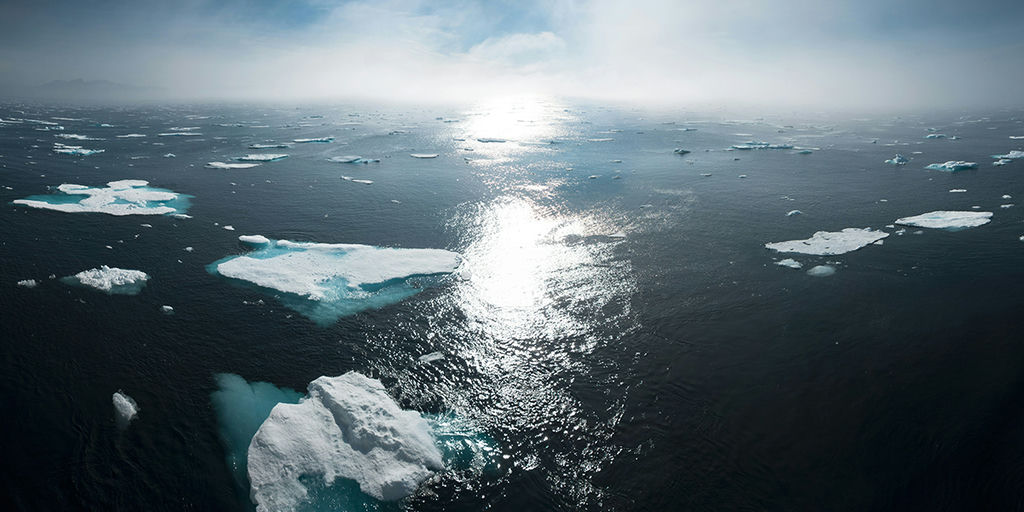Earth Hero Climate Glossary

Image Source: William Bossen/Unsplash
This Climate Glossary provides clear and concise definitions of key terms related to climate science, environmental change, and sustainability. It is designed to help readers better understand the language used in climate change discussions, from scientific reports to policy debates.
By familiarizing yourself with these concepts, you will be better equipped to engage with the challenges and solutions surrounding our rapidly changing planet due to burning oil, gas, and coal and cutting down forests.
**Adaptation: Measures to prepare humans (from the individual to international levels) **for present and future impacts of climate change. Examples include strengthening or building more resilient infrastructure, such as seawalls to counter sea-level rise or better drainage systems to manage flooding from more frequent and severe storms. It can also involve changing behaviors, including planting crops better able to withstand rising temperatures.
**Albedo: **The fraction of light reflected by a surface, up to 1 (all light is reflected). Earth surfaces—atmosphere, land, and oceans—reflect solar energy; lighter surfaces reflect more energy back into space, darker surfaces absorb more energy, thus contributing to global warming. As more snow and ice melts away from the Earth’s surface, the darker surfaces below absorb additional amounts of heat energy.
Anthropogenic: Environmental changes directly or indirectly connected to human activities.
**Atmosphere: **The layer of gases surrounding a planet or other celestial body. Earth’s atmosphere consists of the troposphere, stratosphere, mesosphere, thermosphere, and exosphere.
**Carbon Capture and Sequestration: **Using technologies to capture carbon dioxide emissions from facilities before they are released into the atmosphere, instead transporting the gas to inject and store it deep underground.
**Carbon Dioxide (CO2): **A colorless and nonflammable gas (given normal temperatures and pressure) in which each molecule consists of one atom of carbon and two atoms of oxygen. One of the greenhouse gases.
**Carbon Footprint: **The amount of greenhouse gases emissions connected directly or indirectly to an individual, organization, event, or product.
**Climate: **An extended weather pattern for a specific region.
**Climate Change: **An extended change in average weather patterns at the local, regional, and global levels. Changes identified since the middle of the 20th century in the Earth climate have been linked directly to human activities.
**Deforestation: The intentional clearing of forest land for separate uses. **Removes trees that otherwise absorb carbon dioxide.
Direct Air Capture: Technologies to extract carbon dioxide from the atmosphere for storage underground or use, to reduce its existing heating effect.
**Emissions: **The release of greenhouse gases into the atmosphere.
Extreme Event: An instance in which temperature, precipitation, flooding or other weather, climate, or environmental conditions exceed a specific value that is at the high or low ends of historical measurements. Climate change has increased the likelihood of such events, according to research.
**Feedback: **Processes initiated by a change to the climate that either reinforce or restrain that change. Positive feedback enhances that change—an example being reduced albedo due to warming, which allows the Earth’s surface to absorb more solar energy, which further melts ice and snow. Negative feedback constrains the climatic change—an example being water evaporation from hearing that creates additional clouds, which reflect solar energy out of the atmosphere.
Fossil Fuels: Non-renewable sources of energy (primarily coal, oil, and natural gas) formed underground from organic materials over millions of years of heat and pressure. Burning fossil fuels for energy and other uses is the primary cause of climate change by releasing carbon dioxide and other gases that trap heat within the atmosphere.
Geoengineering: Using new technologies to counter climate change by manipulating the environment, including removal of carbon dioxide from the atmosphere and reflecting more solar energy away from Earth.
**Greenhouse Effect: The trapping of heat close to a planet’s surface by greenhouse gases in the atmosphere. **The process is natural and was necessary for life to exist on Earth. But human emission of additional greenhouse gases, largely by burning fossil fuels, has intensified the process and increased the average temperature by nearly 1.5 degrees Celsius since the industrial age.
Greenhouse Gases: Gases that trap heat within a planet’s atmosphere. The release of those gases is called emissions; Carbon dioxide represents more than three-fourths of greenhouse gas emissions, primarily through burning of fossil fuels. It is followed distantly by methane, nitrous oxide, and trace amounts of other gases.
Methane: A colorless and odorless greenhouse gas that is produced by natural processes such as decomposition of organic material as well as by human activities including agriculture and extraction of fossil fuels. It traps heat more effectively than CO2 but remains in the atmosphere for a much shorter time.
**Mitigation: Addressing the causes of climate change with the goal of stopping and ultimately reducing rising greenhouse gas levels that are trapping heat in the atmosphere. **This would primarily be done by ending burning of fossil fuels but could involve additional approaches such as carbon capture and sequestration.
**Net-Zero Emissions: The point at which **greenhouse gases are not added to the atmosphere. Given the likelihood of continuing emissions for the foreseeable future, that likely would involve removing gases in an amount equal to those being emitted.
**Renewable Energy: Energy sourced from **natural, non-finite processes such as sunlight, water, wind, and geothermal heat.
Sea-Level Rise: The rise in global mean sea level, primarily due to glacier melting and the expansion of water molecules as they warm. Both processes are linked to climate change.
**Tipping Point: Thresholds in the climate system that, if **breached, can lead to fast-moving and unstoppable changes in the system.
Weather: Atmospheric conditions at a particular time and place, encompassing heat, cold, wet, dry, and other statuses.

